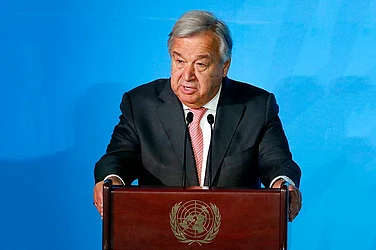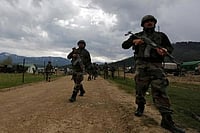In a setback to Russian spacefaring ambitions, the Luna-25 Moon mission failed on Saturday as the spacecraft went out of control and crashed on Moon.
The Luna-25 was the first Russian Moon mission since 1976 and was aiming to be the first to land on the South Pole of the Moon.
Besides achieving the historic first of Lunar South Pole landing, the success of Luna-25 would have been a demonstration of Russian scientific and engineeering prowerss as it would have reached Moon in the midst of worst-ever Western sanctions. But those ambitions now lie crashed on the surface of the Moon.
Following the Luna-25 crash, the world is once again looking at the Indian Chandrayaan-3 which has been on a slow and steady journey to the Moon for over a month. The lander has separated from the propulsion module and will begin the process of landing at around 05.45 pm on August 23 (Wednesday).
No spacecraft has ever landed on the South Pole of the Moon. Besides the symbolic value of the first landing, the insights gathered by the instruments aboard Chandrayaan-3 would also be studied by space agencies the world over. The South Pole of Moon is where Artemis-III of the United States is planned, which would take humans to the Moon for the first time in five decades in 2025-26.
What do we know of Russian crash
In an unexpected turn of events, Russia's lunar aspirations sufered a blow as the Luna-25 spacecraft crashed on the surface of the Moon.
Earlier on Saturday, Russian space agency Roscosmos said the Luna-25 lander had suffered an "emergency situation". During its final pre-landing maneuver, the agency said in a statement in Russian that "an emergency situation occurred on board the automatic station, which did not allow the maneuver to be performed with the specified parameters".
As the anamoly occured, contact was lost with the spacecraft.
"At about 14:57 Moscow time, communication with the Luna-25 spacecraft was interrupted. The measures taken on August 19 and 20 to search for the device and get into contact with it did not produce any results," said Roscosmos in a statement on Russian social media platform VK.com on Sunday.
The same post confirmed that Luna-25 had crashed on the Moon and the mission had failed.
"According to the results of the preliminary analysis, due to the deviationactual parameters of the impulse from the calculated ones, the device moved to an off-design orbit and ceased to exist as a result of a collision with the lunar surface," said Roscosmos in Russian.
The Roscosmos further said that an interdepartmental investigation would be launched to look into the crash and mission failure.
All eyes on Chandrayaan-3 again
After the crash of Luna-25, which was set to be the first to land on Moon's South Pole, all eyes are now again on Chandrayaan-3.
The Indian spacefraft comprising a lander Vikram and rover Pragyaan is scheduled to start its descent on Moon at around 05.45 pon August 23 (Wednesday). The landing is scheduled to happen at 06:04 pm.
This would be India's second attempt to land on the Moon. The first attempt from Chandrayaan-2 landed in a crash in 2019. The orbiter from that mission, however, continues to circle the Moon and provide insights.
In 2009, Chandrayaan-1 was intentionally crashed into Moon's South Pole and a US instrument aboard it confirmed the presence of ice on Moon. The confirmation of ice on South Pole is one of the reasons why the region is of interest.
Chandrayaan-3 has a mission life of 15 Earth-days. It has seven instruments that would perform a range of research and data collection on Moon.


























